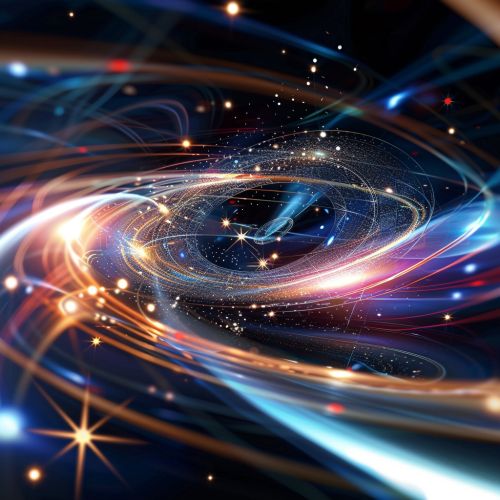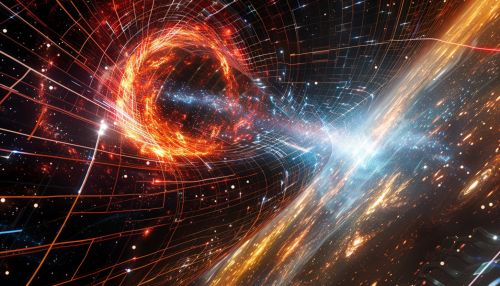Group field theory
Introduction
Group field theory (GFT) is a quantum gravity theory that merges the insights of loop quantum gravity (LQG) and spin foam models. It provides a background-independent quantum description of spacetime and its geometry.


Background
The concept of GFT was first proposed in the late 1990s as an attempt to reconcile the differing approaches of LQG and spin foam models. Both theories aim to reconcile general relativity, which describes gravity, with quantum mechanics, which describes the other three fundamental forces. However, they approach this problem from different angles. LQG is a canonical approach, meaning it starts with a classical theory and applies a quantization procedure, while spin foam models are a covariant approach, meaning they start with a path integral formulation of the theory.
Formalism
The formalism of GFT is based on the notion of a group field, which is a complex-valued function on a certain number of copies of a group. The group is usually taken to be SU(2), the group of rotations in three dimensions, or a related group. The field is subject to a set of constraints that ensure it is invariant under certain transformations.
The dynamics of the field are given by an action, which is an integral over the group manifold. The action includes a kinetic term, which is a quadratic function of the field, and an interaction term, which is a higher-order function of the field. The interaction term is responsible for the creation and annihilation of quantum states of geometry.
Quantum states and observables
In GFT, quantum states of geometry are represented by spin networks, which are graphs with edges labeled by spins and nodes labeled by intertwiners. These spin networks are the same as those used in LQG, but in GFT they are interpreted as Feynman diagrams, representing the propagation of quanta of space.
Observables in GFT are constructed from the field operators and their conjugates. They represent geometric quantities such as areas, volumes, and angles. The expectation values of these observables can be calculated using the methods of quantum field theory.
Relation to other theories
GFT can be seen as a second quantization of LQG, in the sense that it describes a many-particle system where the particles are quanta of space. It can also be seen as a generalization of spin foam models, in the sense that it provides a framework for summing over spin foams.
GFT is also related to other approaches to quantum gravity, such as matrix models and causal dynamical triangulations. It shares with these approaches the idea of a dynamical, discrete structure of spacetime at the Planck scale.
Current research and open problems
Current research in GFT focuses on several areas. One is the study of the renormalization group flow of the theory, which is expected to reveal the emergence of classical spacetime at large scales. Another is the study of the symmetries of the theory, which are expected to include not only the usual spacetime symmetries, but also new quantum symmetries.
There are also several open problems in GFT. One is the problem of time, which is the question of how to define a notion of time in a theory where spacetime is not fundamental. Another is the problem of matter, which is the question of how to include matter fields in the theory.
